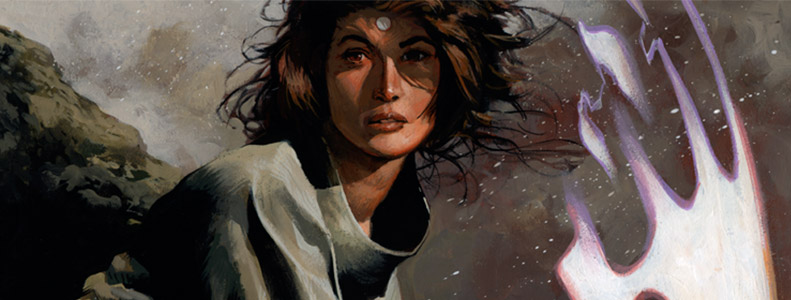Christopher Moeller Interview
Welcome to our Artists Interview series There’s no Magic without art – where we talk to artists about their work on Magic: The Gathering.
Today we share with you our interview with Christopher Moeller, who recently announced his retirement from Magic. Here’s what he told us.

Hi Chris! Can you tell us how you got started working on Magic back in ’97/8?
Sure! I was introduced to Ron Spears (the art director at the time) at the San Diego Comicon. I used to set up there every year to support my comics work, and a lot of business connections occurred there.
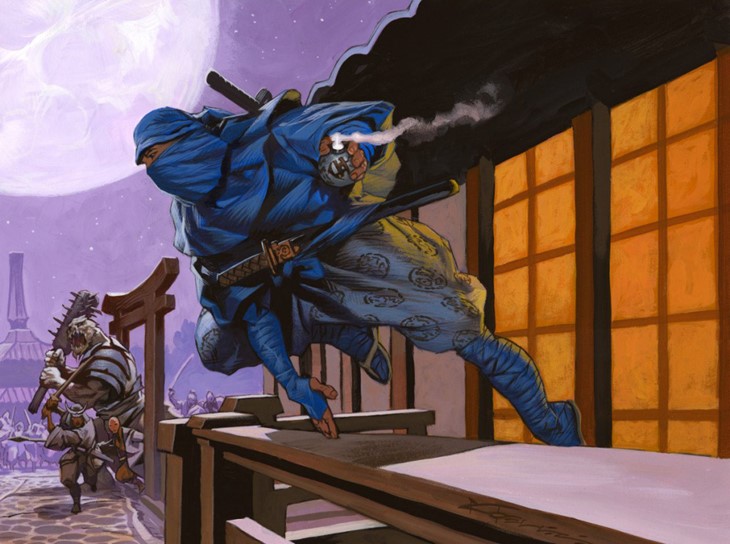
In the early days, Magic had a great variety of art styles. As the game grew, this variety gave place to homogeneity, and the art direction took a turn towards a more realistic style. What are your thoughts on these changes?
Magic’s increasing prominence in the industry is what has allowed it to become more focused on its “look”. The variety in the very early Magic work was a function of WotC’s lack of resources. They couldn’t pay much upfront, so they had to cast a wide net to bring in enough artists to produce the number of pieces necessary for the game.
As WotC was able to pay more, and as Magic’s prominence as a brand grew, it began to attract more and more artists. That allowed Magic to be more selective about who they hired, and to make the game look more instantly identifiable and consistent. “Homogeneity” is a word with some negative connotations that I don’t agree with. I would say that the visual language of Magic now is much more focused.

My only critique (and it could be leveled at the early work as well) is that there is often a disconnect between the color of the card and the color language of the art. That’s a failure, in my view. When you pull a red card, it should say “red”. The art now, when you spread it out on the table tends to all look “gray”. In the early days, it read “every color imaginable”. Both of those tendencies are failures in my view.
Can you give us a brief description of your painting process for Magic?
In the broad strokes, my approach doesn’t vary from other artists that much. I do a number of preliminary drawings, my art director selects one, often with some comments about things that they’d like to see emphasized or downplayed, then I go to paint. Where I do think my work differs from other artists is that I paint in acrylics primarily, sometimes in oil, but never digitally.
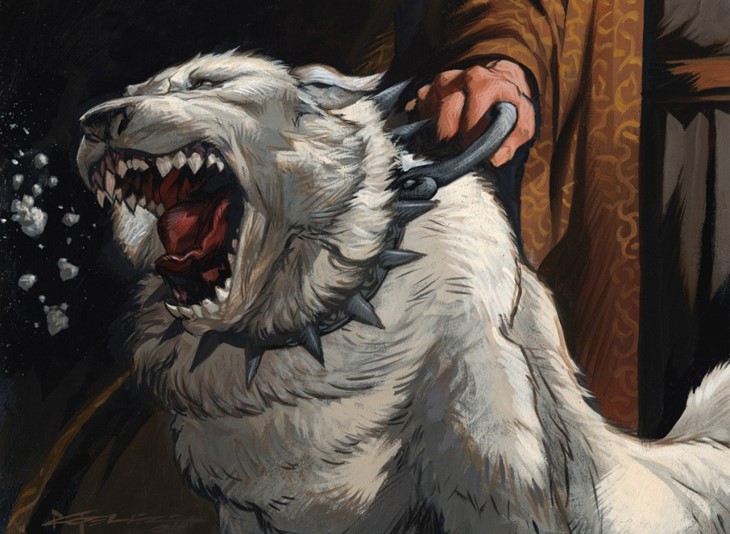
That’s not a slap at digital painting, I respect good digital art immensely, but I like the physical act of painting. Sitting in front of a computer all day isn’t what making art should feel like to me. I like to push pigment around on the canvas. My technique came out of the comics world, so it has that aesthetic” emphasizing line, shape, a sometimes angular graphic quality.
One curious aspect of your work is the unusual use of perspective. Cards like Deny Existence, Satyr Piper, and Wall of Spears, all use this technique to great effect, making the viewer feel like he’s part of the scene. Is immersion an important aspect of your art?
Absolutely. Careful selection of the viewere’s point of view is one of those elements that came from my work in comics. Comic book art, storytelling through sequential images, derives much of its effect from dramatic or unusual staging. If you’ve ever seen a comic like Peanuts, let’s say, the “camera” is always side-on.

That works with a very simple drawing style like Schultz used, but for a comic it’s deadening. Imagine a movie shot only from one perspective. It would be really dull. That’s true of single-image storytelling as well. I think of my paintings as one moment in a story. What came before? What will come after? Did I choose the right moment for the story?
What were some of the most challenging cards to paint, and why?
Let’s look at it another way: the simplest cards to paint are those with just a few elements. The challenge in those pieces (Fireshrieker, for example) is how to give the piece interest. The most difficult pieces are those with the most elements Bazaar of Baghdad, Sower of Temptation, Gilt-Leaf Palace, all of the Ravnica lands.
They need to work very small, so, in spite of all of the detail, the large shapes must hold up or it will look like a mess when it’s reduced in size. The detail must be handled in such a way that the card “reads” properly” what’s emphasized? Does the viewer’s eye go to the center of attention first, or does it get lost in all the detail?
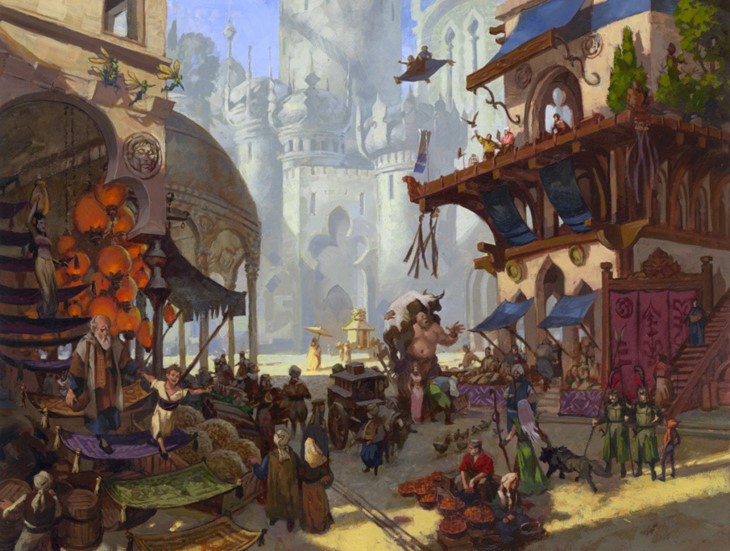
Last year you announced your retirement from Magic. You’ve mentioned that there was a point where “painting shifted from what had always been a joy (work, but joyful work), into a chore”. Do you keep working on personal pieces?
I do. I paint landscapes, I paint figurative work (which I sell through everydayoriginal.com). I also still do illustration, just not as frequently as I did when I did it full time.
What do you consider to be the defining factors behind the game’s longevity?
No question, it’s organized play. I think people underestimate how powerful a tool that has been for keeping young players coming into the game. Every other collectible game has collapsed fairly quickly, despite beautiful art, or sound design, because nobody could replicate the robust organized play network that WotC built.
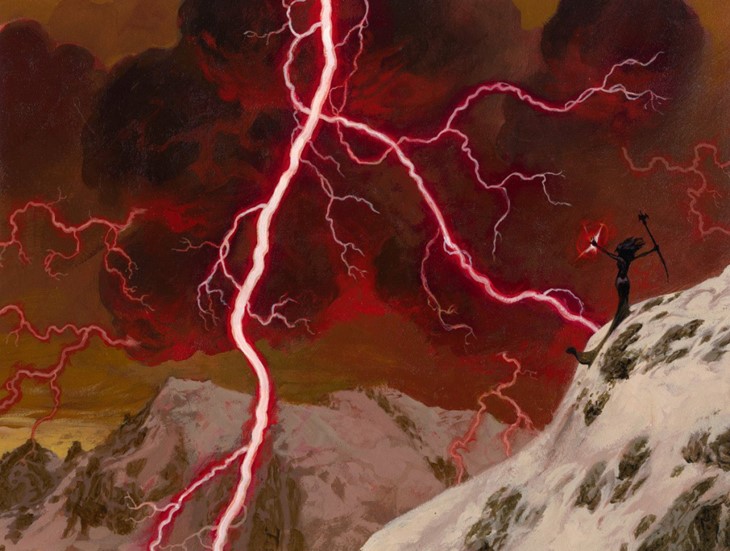
And what about your favorites?
Copper-Leaf Angel, Blood Ogre, Samurai of the Pale Curtain, Black Knight & White Knight, Snake Umbra, Shelter, Ink-Treader Nephilim. Three pieces of power in manuscript-style.
Is there any Magic-related story/episode you’d like to share with us?
When I went to Japan, I took my son Eric with me. Eric had posed for me for the characters in Meddling Kids. When fans found out, he ended up spending a good amount of time signing Meddling Kids with me at my table! Whenever I bring him along for events, he always does at least one or two signatures.

Check out Christopher’s website and buy a print of his work on Original Magic Art.
Recommended Posts

Adam Paquette Interview
Welcome to our MTG Artists Interview series There's no Magic without art. For this week's interview, we talked with Ad
Read More
Anson Maddocks Interview
Welcome to our MTG Artists Interview series There's no Magic without art. We're very happy to share with you our talk
Read More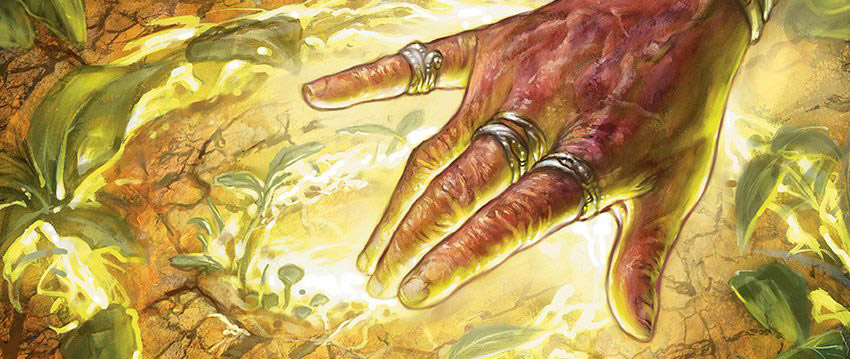
Anthony Palumbo Interview
Welcome to our Artists Interview series - There's no Magic without art - where we talk to artists about their work on
Read More